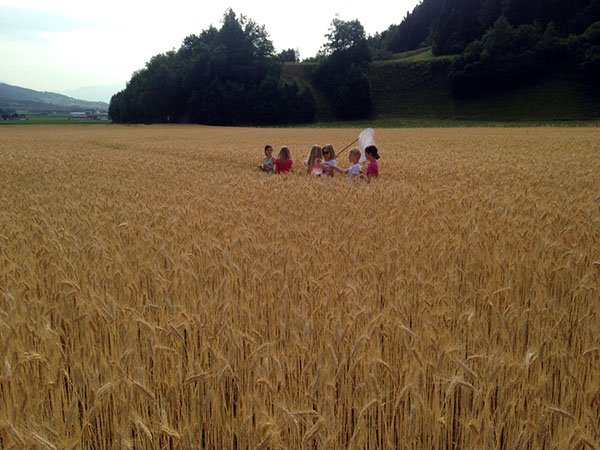Flock also needs muck!
Sparkling Science: The effect of fertilization type on invertebrates and plants in cereal fields

Partners: Johannes Rainer, Ulrike Traugott-Priester, Gabriele Pallua, Andrea Illmer-Zotlöterer, Ute Hiederer-Willi, Daniel Nigg
The production of sufficient amounts of high quality food in a socially and ecologically sustainable way is one of the central challenges of mankind. Beside plant pathogenic microbes, aphids and cereal leaf beetles can lead to pronounced yield losses and are therefore the most important pests in cereal fields in Europe. They are attacked and to some extent regulated by parasitic wasps and arthropod predators (mainly beetles and spiders). Both, pests and their natural enemies are influenced by cultivation practices such as the amount and type of fertilization.
In this project, the effects of fertilization type on the species community (diversity, abundance and biomass) of invertebrates and plants will be investigated in cereal fields involving pupils. Earthworms play a central role in belowground ecosystem as they provide important services, such as decomposition and bioturbation, thus supporting soil fertility. Therefore they will also play a central role in the present project. The development of a molecular species identification system will allow assessing and characterizing the community of these important soil animals without the necessity of killing them for the analysis. Fertilizer induced shifts in functional groups of invertebrates will be recorded, and a barcoding DNA sequence database will be established for the respective animals. Fertilization effects on plants will be determined via factors such as growth rate and yield of cereals, weed cover and the presence of plant pathogenic fungi in the field.
All those results will supplement the findings of an ongoing scientific project financed by the Austrian Science Fund (FWF, P26144) and contribute to a comprehensive functional understanding of the effects of fertilization type on the species community in cereal fields. The cooperation of pupils and teachers from two schools (BRG in der Au in Innsbruck and hlfs Kematen) together with scientists of the University of Innsbruck allows the kids to work on topical questions of fundamental research and to get them into science
ATE members involved in the fertilization biocontrol project:
Corinna Wallinger, Michael Traugott Daniela Sint (PI)
